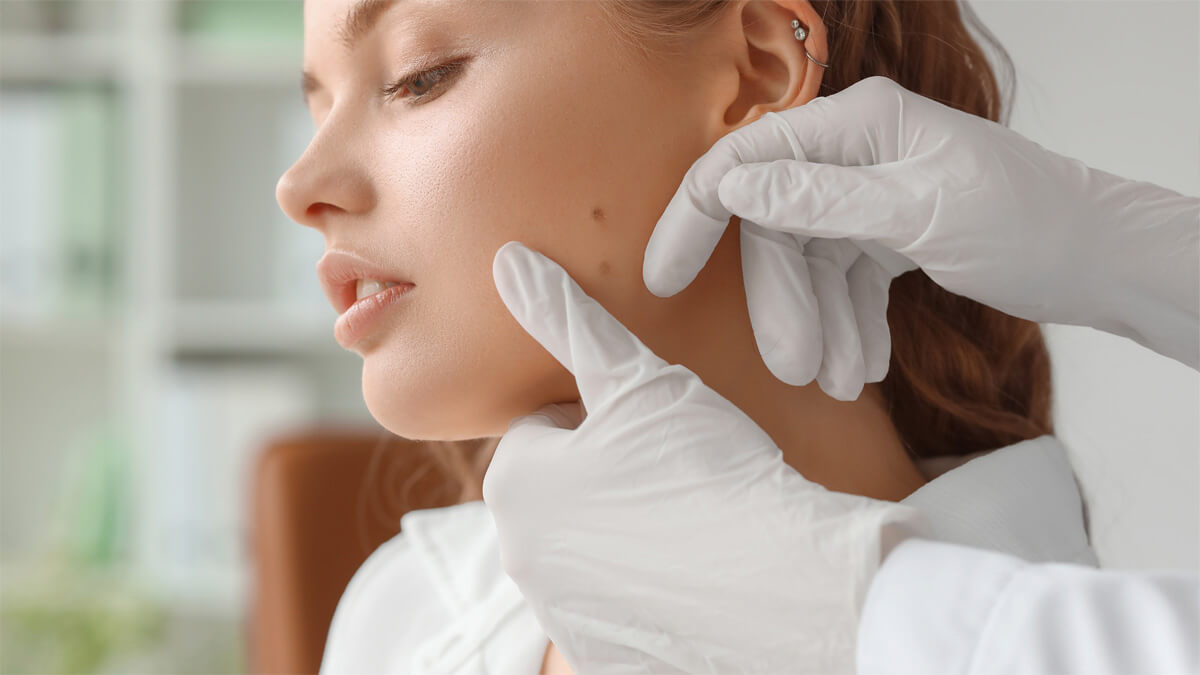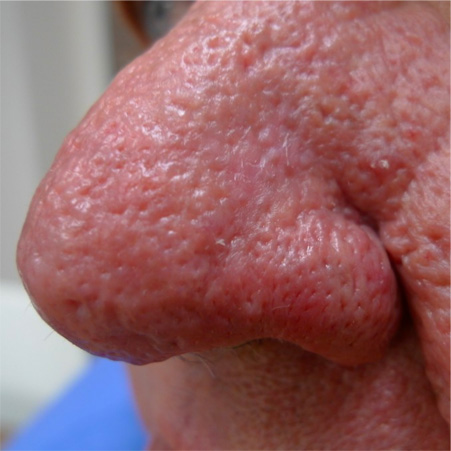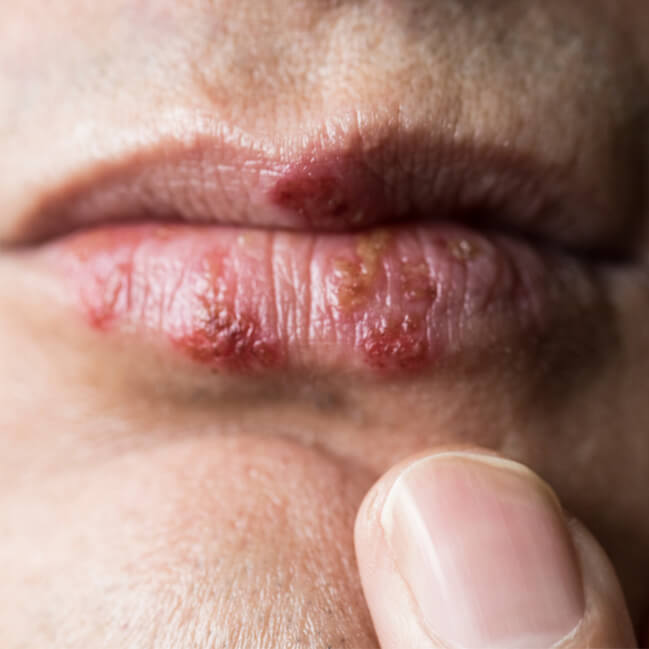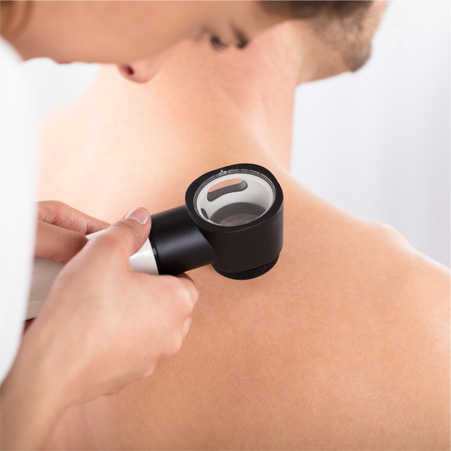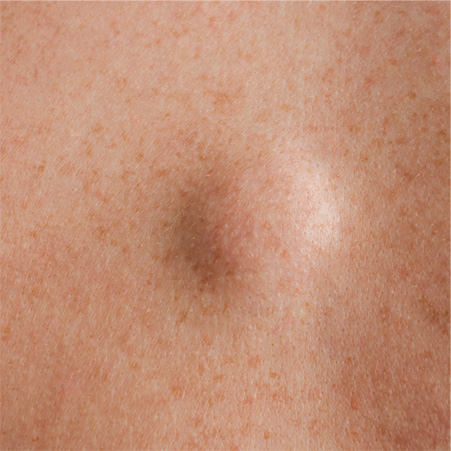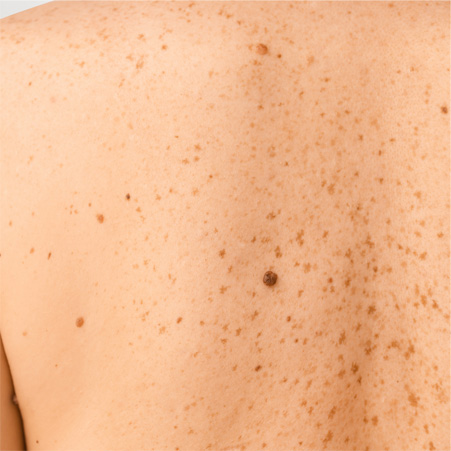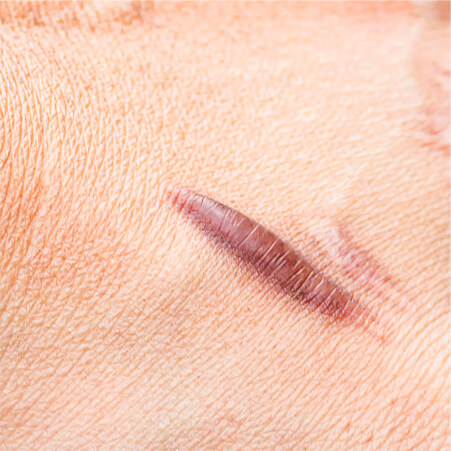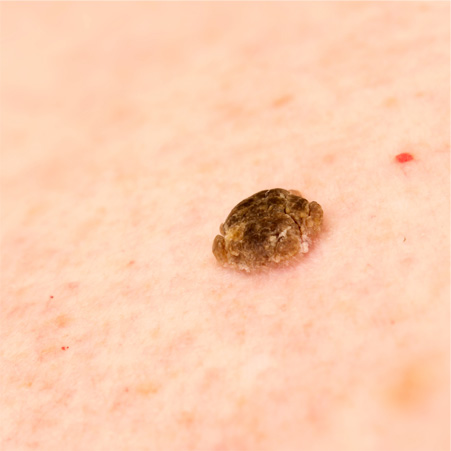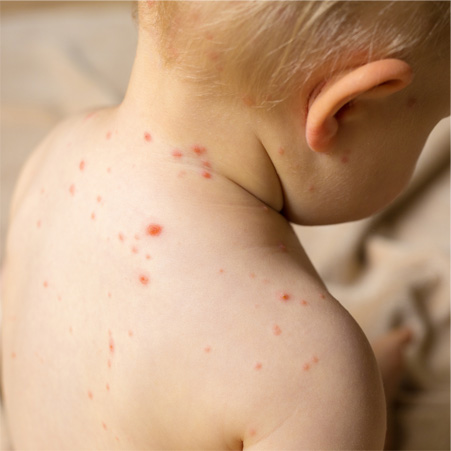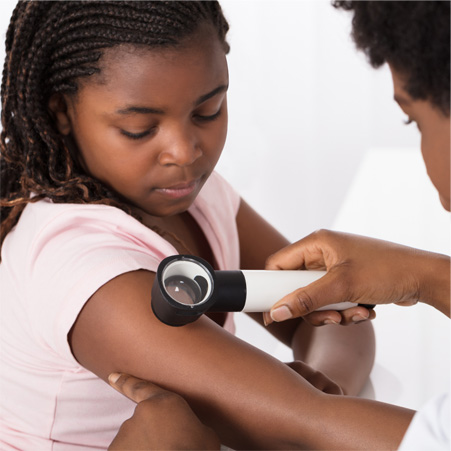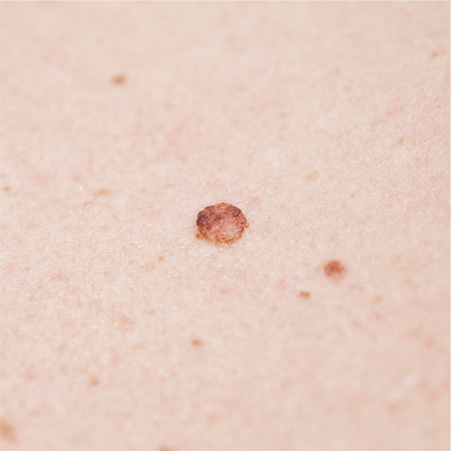-
Description
Acne is a common skin condition caused by excess oil production, dead skin cell buildup, and bacterial infection, leading to inflammation in clogged pores. Hormonal fluctuations and genetic predispositions contribute to its development, while factors like diet, stress, medications, and cosmetics can worsen symptoms.
Read More -
Cause
Acne is primarily caused by excess oil production, dead skin cell buildup, and bacterial infection, leading to inflammation in clogged pores. Hormonal fluctuations and genetic predispositions also play significant roles in its development.Additionally, factors like diet, stress, medications, and cosmetic products can exacerbate acne by further irritating the skin or disrupting hormonal balance.
Read More -
TreatmentRead More
The goal is to unclog pores with treatments that remove dead skin cells, called exfoliation; to reduce acne bacteria with antibiotics and topical treatments, and to normalize oil gland production. Early treatment is the most effective way to prevent severe acne and scarring.
-
Description
Allergic reactions can appear as bumpy, red, itchy skin, and painful. The common causes of allergic reactions can be related to exposure to certain foods, medications, or plants. If you are not sure what is causing your allergic reactions please visit your dermatologist to diagnose and treat your condition.
Read More -
Cause
Allergies are caused by the immune system's hypersensitive response to substances that are generally harmless to most people. These substances, known as allergens, can include pollen, dust mites, mold spores, pet dander, food, insect stings, and certain medications. When a susceptible person is exposed to an allergen, their immune system mistakenly identifies it as a threat and releases chemicals like histamines, leading to allergy symptoms. Genetic factors can also play a role, as allergies often run in families. Environmental factors, such as exposure to certain infections during early childhood, pollution, and changes in dietary patterns, may also influence the development of allergies.
Read More -
TreatmentRead More
Topical Creams and Ointments: Over-the-counter and prescription creams, such as hydrocortisone, can reduce inflammation and itchiness. For more severe reactions, a doctor might prescribe stronger topical corticosteroids.
-
Description
Eczema is a general term used to describe itchy, red, scaly skin. Atopic dermatitis is a skin condition that often presents in childhood, usually in the first year of life. The skin’s barrier is compromised and it becomes extremely itchy. Scratching and rubbing result in a red rash that may flake, blister, or even bleed. Keeping your eczema under good control is important to minimize itch and prevent skin infections, which are more common on eczematous skin.
Read More -
Cause
Eczema is a multifactorial condition, meaning that a combination of several factors usually contributes to its development and flare-ups. Understanding individual triggers is a key part of managing eczema effectively.
Read More -
Treatment
Eczema treatment typically focuses on managing symptoms and reducing inflammation. This often involves the use of moisturizers to combat dry skin and topical corticosteroids or calcineurin inhibitors to control inflammation and reduce immune system activity. Additionally, lifestyle changes like avoiding triggers, using gentle soaps and detergents, and managing stress can also be crucial in managing eczema effectively.
Read More
-
Description
Melasma is one of the most common skin conditions that results in brown/tan pigmentation on the forehead, cheeks, chin, upper lip, and nose. Sun exposure, hormonal imbalance, birth control, and pregnancy can contribute to the development of Melasma. Melasma is a chronic condition that requires management with a combination of cosmetic and medication options.
Read More -
Cause
Melasma is primarily caused by the overproduction of melanin, the pigment responsible for skin coloration. Hormonal changes, such as those occurring during pregnancy or with the use of hormonal contraceptives, can trigger or exacerbate melasma. Sun exposure is also a significant contributing factor, as UV radiation stimulates melanocytes to produce more melanin, leading to the darkening of existing patches or the development of new ones.
Read More -
Treatment
Our providers are skilled at developing a treatment plan that is catered to your individual needs. These can include the following:
Read More
-
Description
Rhinophyma is a form of rosacea most commonly seen in men. Rhinophyma presents an overgrowth of tissue over the nose and nasal tip. Most men with rhinophyma develop enlarged pores, pimples, and changes in the nose structurally. These can slowly develop over time.
Read More -
Cause
Rhinophyma is a condition characterized by a large, bulbous, and reddened nose, often associated with severe cases of rosacea. It occurs due to the overgrowth of sebaceous glands and connective tissue in the nose, leading to thickening of the skin and distortion of its shape. While the exact cause is not fully understood, factors such as genetics, chronic inflammation, and vascular abnormalities are believed to play a role in its development.
Read More -
Treatment
Treatment options can include a combination of surgery and laser therapy. The treatment plan for you is best determined by our board-certified dermatologists. Mild to moderate cases of rhinophyma can be treated with Co2 ablative surgery or by Erbium Yag surgery; more aggressive treatment options may be needed for larger areas that require more structural changes.
Read More
-
Description
Herpes is a common viral infection, many people that get the virus that causes herpes may not see or feel anything. If you have ever had a fever blister or cold sore, you have picked up the herpes simplex virus.
Read More -
Cause
Herpes is caused by herpes simplex viruses, primarily herpes simplex virus type 1 (HSV-1) and herpes simplex virus type 2 (HSV-2). These viruses are highly contagious and typically spread through direct contact with the mucous membranes or skin lesions of an infected individual. Once the virus enters the body, it establishes a lifelong infection, with flare-ups triggered by factors like stress, illness, or weakened immune function.Herpes is caused by herpes simplex viruses, primarily herpes simplex virus type 1 (HSV-1) and herpes simplex virus type 2 (HSV-2). These viruses are highly contagious and typically spread through direct contact with the mucous membranes or skin lesions of an infected individual. Once the virus enters the body, it establishes a lifelong infection, with flare-ups triggered by factors like stress, illness, or weakened immune function.
Read More -
Treatment
Treatment for herpes typically involves antiviral medications such as acyclovir, valacyclovir, or famciclovir, which can help reduce the severity and duration of outbreaks. These medications work by inhibiting the replication of the herpes simplex virus. Additionally, managing symptoms through pain relief, keeping the affected area clean and dry, and practicing safe sexual practices to prevent transmission are essential aspects of herpes management.
Read More
-
Description
Angiomas are small blood vessels that appear on the body as three forms of benign growths: Cherry Angiomas, Spider Angiomas, and Angiokeratomas. Irritation might occur due to rubbing against clothing, although angiomas are harmless most patients seek to treat them for cosmetic reasons.
Read More -
Cause
Angiomas are benign growths of blood vessels in the skin, typically appearing as small red or purple spots or bumps. The exact cause of angiomas is not fully understood, but they are thought to develop due to genetic factors, hormonal changes, and aging. Sun exposure and certain medical conditions may also contribute to their formation.
Read More -
Treatment
Treatment for angiomas depends on the type and size of the lesion, but options typically include laser therapy, electrosurgery, cryotherapy, or surgical excision. These procedures aim to remove or destroy the abnormal blood vessels causing the angioma while minimizing scarring and discomfort. Regular monitoring by a dermatologist is recommended to assess changes and determine the most suitable treatment approach.
Read More
-
Description
Cysts are lumps of gaseous material, fluid, or semisolid. Most cysts are benign and develop due to blockage in our body's natural drainage systems. Tests might be needed like a CT scan, ultrasound, or a biopsy in order to confirm that it is a cyst.
Read More -
Cause
Cysts develop when fluid, dead skin cells, or other debris accumulate beneath the skin, forming a sac-like structure. The primary cause of cyst formation is often blockage or obstruction of the hair follicles or oil glands, leading to the accumulation of material within the cyst. Factors such as hormonal changes, infections, and genetic predisposition can contribute to the development of cysts in various parts of the body.
Read More -
Treatment
Treatment for cysts typically involves drainage or removal of the cystic contents through procedures such as incision and drainage, corticosteroid injections, or surgical excision. In some cases, antibiotics may be prescribed if the cyst is infected. It's important to seek medical attention for proper evaluation and management of cysts to prevent complications such as infection or scarring.
Read More
-
Description
Fatty Tumors/Lipomas are located just below the skin. They are non-cancerous and are usually harmless. They may occur in the neck, shoulders, abdomen, back, thighs, and arms.
Read More -
Cause
Fatty tumors, also known as lipomas, develop when fat cells accumulate and form a benign growth beneath the skin. The exact cause of lipomas is often unknown, but they may be linked to genetic factors, hormonal imbalances, or trauma to the affected area. While typically harmless, lipomas can grow slowly over time and may be associated with conditions like obesity or familial multiple lipomatosis.
Read More -
Treatment
Treatment for lipomas is usually unnecessary unless they cause discomfort or cosmetic concerns. Surgical excision is the most common treatment option, especially for larger or bothersome lipomas. In some cases, liposuction or steroid injections may be considered as alternative approaches to remove or reduce the size of the lipoma.
Read More
-
Description
These are melanocytic nevi or moles that appear usually within the first twenty-plus years of life. Moles are considered benign and do not necessarily require further treatment.
Read More -
Cause
Moles, also known as nevi, develop when melanocytes, the pigment-producing cells in the skin, grow in clusters instead of spreading evenly. The exact cause of moles is primarily genetic, with factors such as sun exposure and hormonal changes also playing a role in their formation. While most moles are benign, certain types, such as dysplastic nevi, may have a higher risk of developing into melanoma, highlighting the importance of regular skin examinations and monitoring for changes.
Read More -
Treatment
Moles can be removed by three different treatment options: excisional mole removal, shave mole removal, and laser mole removal. Excisional mole removal is a surgical procedure that results in minimal scarring and one to two weeks for recovery. Mole removal with the use of special instruments done in the office can also be accomplished without the use of sutures. Lasers such as fractional CO2 or fractional Erbium Yag can be done to improve the overall appearance post Mole excision and mole shave.
Read More
-
Description
Keloids are raised scars that occur where the skin has healed after an injury. Keloids can be caused by anything that causes a scar for example: tattoos, body piercing, or surgeries. They start to form when your cells are trying to repair the wound by forming a scar, extra tissue can cause a raised area called a keloid.
Read More -
Cause
Keloids form as a result of an overgrowth of scar tissue in response to skin trauma, such as surgical incisions, acne scars, piercings, or burns. The exact cause of keloids is not fully understood, but genetic factors, excessive collagen production, and an abnormal wound healing response are believed to contribute to their development. Individuals with a family history of keloids or certain skin types, particularly those with darker skin tones, are more prone to developing keloids.
Read More -
Treatment
Treatment options for keloids include corticosteroid injections, which help reduce inflammation and flatten the scar tissue. Additionally, surgical removal, accompanied by post-operative treatments such as silicone gel sheets, pressure dressings, or radiation therapy, may be employed to prevent recurrence. However, keloids can be challenging to treat and may require a combination of approaches tailored to individual patient needs.
Read More
-
Description
A noncancerous skin growth that is usually light tan, brown, or black. The growth can appear to look scaly, waxy, and/or slightly raised. Seborrheic Keratosis can grow on the back, neck, chest, and head.
Read More -
Cause
Seborrheic keratosis, a common non-cancerous skin growth, develops due to the proliferation of keratinocytes, the predominant cell type in the outer layer of the skin. While the precise cause is unclear, factors such as aging, sun exposure, and genetics are believed to play significant roles in their formation. These growths typically appear as wart-like or stuck-on lesions with varying colors, textures, and sizes, often increasing in frequency with age.
Read More -
Treatment
Treatment for seborrheic keratosis is usually not necessary unless the growths become bothersome or for cosmetic reasons. If removal is desired, options include cryotherapy (freezing), curettage (scraping), electrocautery (burning), or laser therapy. However, it's important to consult a dermatologist for proper evaluation and recommendation of the most suitable treatment approach.
Read More
-
Description
The rashes appear as raised, red patches on the skin, often accompanied by itching or discomfort. They may vary in size, shape, and distribution across the body.
Read More -
Cause
Rashes can be caused by a variety of factors, including allergic reactions to certain foods, medications, or substances in the environment. They may also result from viral or bacterial infections, such as chickenpox or streptococcal infections. Additionally, skin conditions like eczema, psoriasis, or contact dermatitis can lead to the development of rashes.
Read More -
Treatment
Treatment for rashes depends on their underlying cause and severity. Over-the-counter antihistamines or corticosteroid creams can help relieve itching and inflammation in mild cases, while prescription medications may be necessary for more severe or persistent rashes. In some instances, identifying and avoiding triggers, such as certain foods or allergens, can also play a crucial role in managing and preventing rashes.
Read More
-
Description
Pediatric dermatology is a specialized branch of medicine focusing on the diagnosis and treatment of skin conditions in infants, children, and adolescents. It encompasses a wide range of conditions unique to this age group, including birthmarks, eczema, acne, infections, and genetic disorders. Pediatric dermatologists are trained to address the specific needs of young patients, considering factors such as growth and development, psychological impact, and family dynamics in providing comprehensive care.
Read More -
Treatment
Treatment in pediatric dermatology varies depending on the specific condition but may include topical medications, oral medications, phototherapy, or procedural interventions such as laser therapy or surgical procedures. Pediatric dermatologists tailor treatments to the child's age, medical history, and the severity of the condition, often emphasizing gentle and child-friendly approaches to ensure compliance and comfort. Additionally, education and counseling for both the child and their caregivers play a crucial role in managing skin conditions effectively.
Read More
-
Description
Skin growths are abnormal accumulations of cells on the skin's surface, ranging from benign moles and warts to potentially malignant tumors like melanoma. Their appearance, size, and texture can vary widely, often necessitating medical evaluation to determine their nature and appropriate management.
Read More -
Cause
Skin growths can be caused by a variety of factors, including genetic predispositions, exposure to ultraviolet (UV) radiation from the sun or tanning beds, viral infections such as human papillomavirus (HPV), or hormonal changes. Certain skin growths like moles are often benign and develop as a result of a cluster of melanocytes, while others like skin tags may form due to friction or rubbing against the skin. Additionally, some skin growths may be associated with underlying medical conditions or age-related changes in the skin's structure and function.
Read More -
Treatment
Treatment for skin growths depends on the specific type and characteristics of the growth. Options may include topical medications, cryotherapy (freezing), surgical excision, laser therapy, or electrosurgery. It's important to consult a healthcare professional for proper diagnosis and treatment planning to ensure the most effective and appropriate approach for each individual case.
Read More


